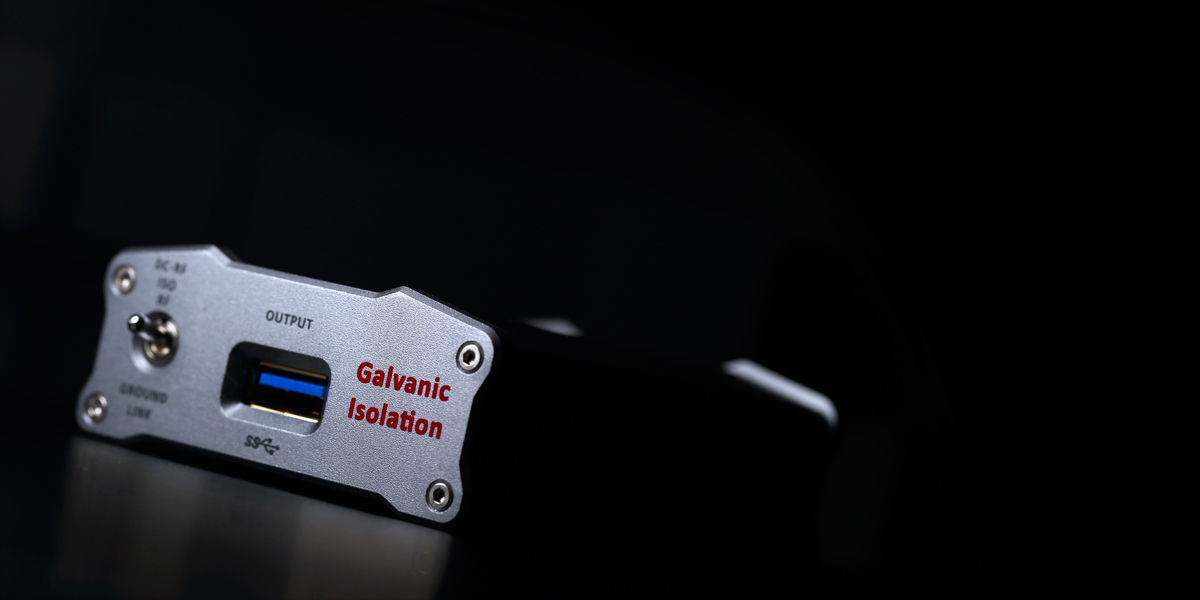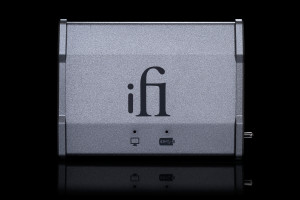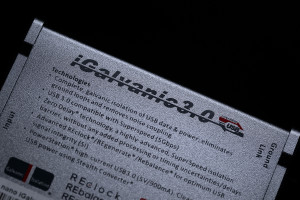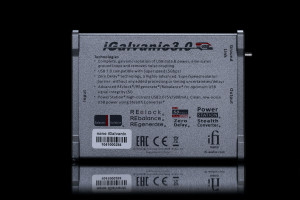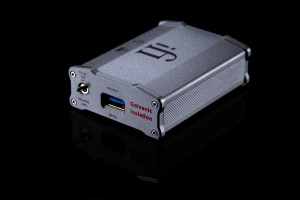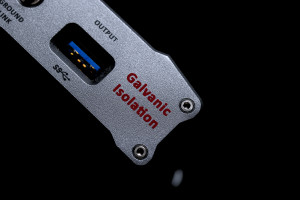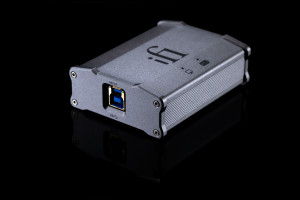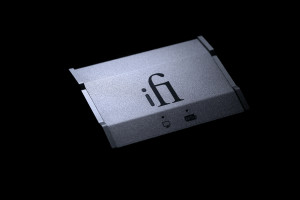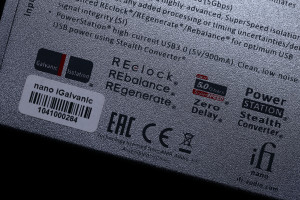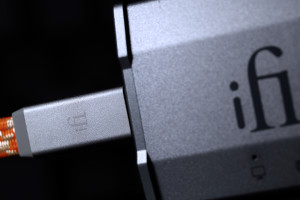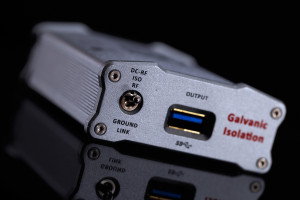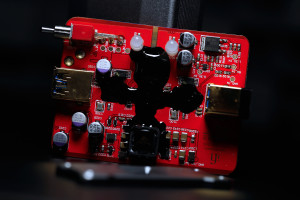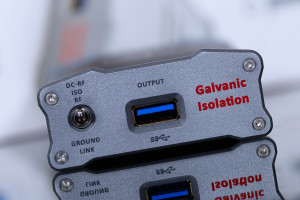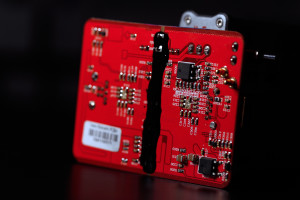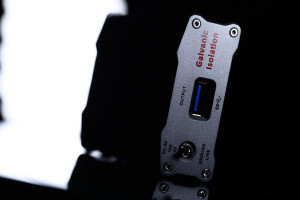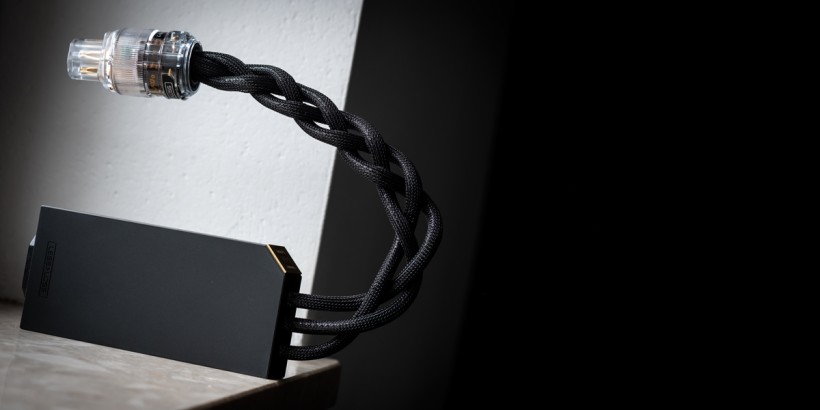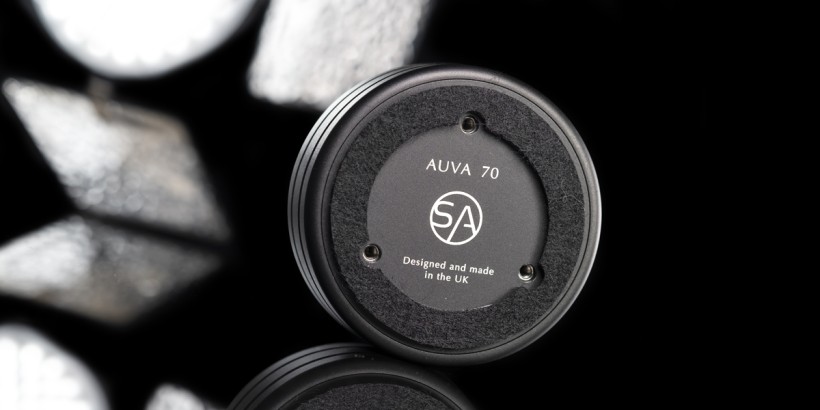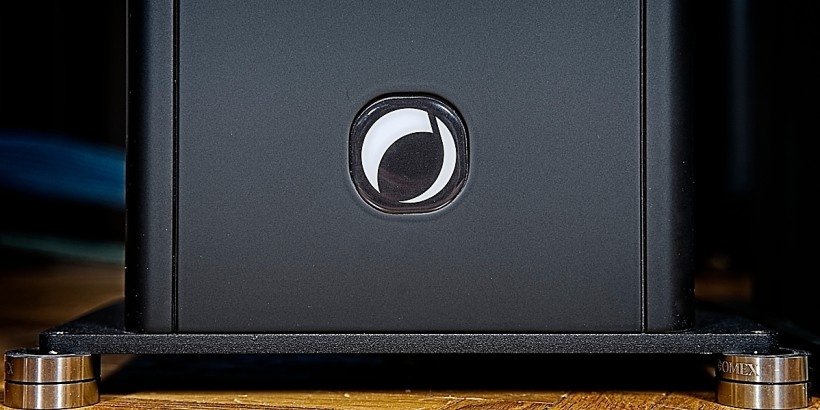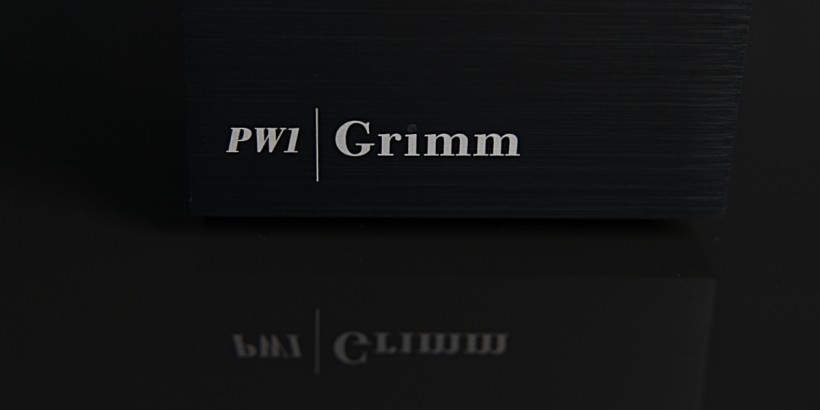USB audio is hot for many years now, yet viable tweaks to make it better and better seem to have no end. They arrive in waves. At first USB cables promised an improvement, then various reclockers and for some time galvanic isolation is the latest fad. But is it really just that? There’s only one way to find out and iFi audio iGalvanic3.0 seems to be the perfect tool for this job. Enjoy!
Introduction
A fad stands for widely shared and intense enthusiasm for something, especially one that is short-lived and without basis in the object’s qualities; or a craze if you will. Needless to say, such a phenomenon is very present in audio, yet it doesn’t go away that easily and almost never dies. Usually it steps down from the pedestal to shadows and the next big thing happens instead. But as far as USB related decrapifiers go, several trends can and often times do work in complimentary fashion with no issues. As long as sound quality is improved, we’re dandy as that’s what the audio game is all about. USB is tricky, though. It was never meant for music but printers etc. instead, hence one might ask why to use it in the first place then. Today such a question is redundant, simply because this protocol is widely known as a damn convenient one. And popular. And mainstream. And can sound good, it just takes some measures to get there. Today the USB related knowledge is far bigger than years ago, all of this protocol’s issues are both well-recognized and treatable. Heck, centuries ago people died from pneumonia and now they almost never do.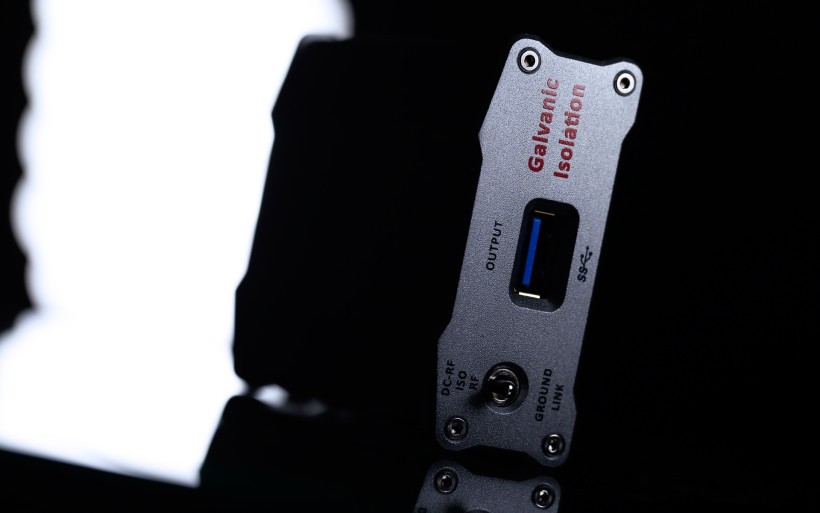 iFi audio plays the trendy game very well. Very. For a good reason, though. These people not only are perfectly aware of what people might want and need at a given time, but also know how to properly reforge their R&D team’s efforts into something worthwhile without breaking one’s bank. Past iFi audio’s iPurifier and micro iUSB3.0 reviews, yours truly can safely say that he’s been there already. These two products provide the same USB cleaning service, yet to a different degree, hence their impact on the outcome varies and so do their price tags. Although both English critters work in quite wide spectrum, namely they handle most USB related issues effectively, there’s a room to tinker still.
iFi audio plays the trendy game very well. Very. For a good reason, though. These people not only are perfectly aware of what people might want and need at a given time, but also know how to properly reforge their R&D team’s efforts into something worthwhile without breaking one’s bank. Past iFi audio’s iPurifier and micro iUSB3.0 reviews, yours truly can safely say that he’s been there already. These two products provide the same USB cleaning service, yet to a different degree, hence their impact on the outcome varies and so do their price tags. Although both English critters work in quite wide spectrum, namely they handle most USB related issues effectively, there’s a room to tinker still.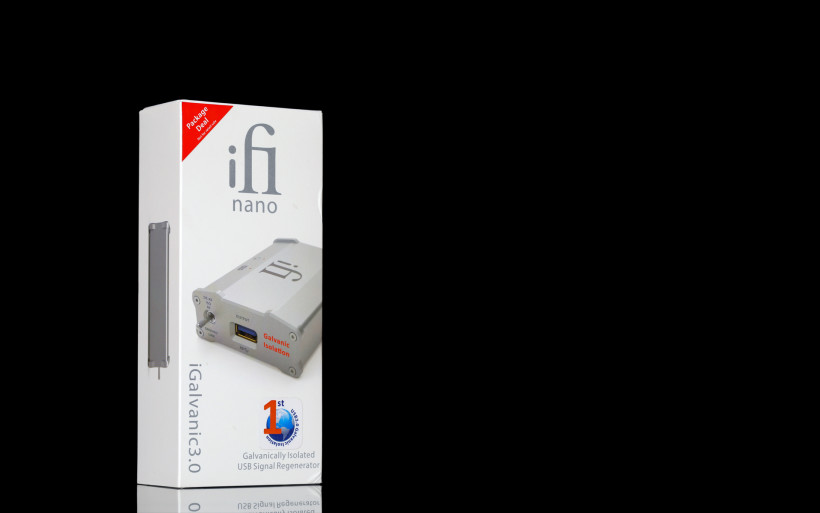 USB is said to be digital, yet the data stream itself is carried from a host to a receiver in the analog fashion. ‘Em zeros and ones are in fact differential voltages and as such are subject to a number of noise/ground issues. Why? Simply because the USB connection sports a ground link, which not only allows these but also has to be a part of the package, otherwise the protocol itself won’t work. Here galvanic isolation comes into play. The very purpose of it is to pass data between galvanically isolated circuits, yet without DC connection. Wait, wasn’t this something USB can’t initially work without? Ah, that’s the magic right there…
USB is said to be digital, yet the data stream itself is carried from a host to a receiver in the analog fashion. ‘Em zeros and ones are in fact differential voltages and as such are subject to a number of noise/ground issues. Why? Simply because the USB connection sports a ground link, which not only allows these but also has to be a part of the package, otherwise the protocol itself won’t work. Here galvanic isolation comes into play. The very purpose of it is to pass data between galvanically isolated circuits, yet without DC connection. Wait, wasn’t this something USB can’t initially work without? Ah, that’s the magic right there…
Build
The product arrived in a small white box, typical for iFi audio’s nano range. Nothing out of ordinary here. Inside it there’s a very short yet useful manual. Such things are usually skipped, yet in case of iGalvanic3.0 it’s strongly advised to actually get yourself familiarized with it as this product in particular can be tricky to work with at times, more on this subject shortly.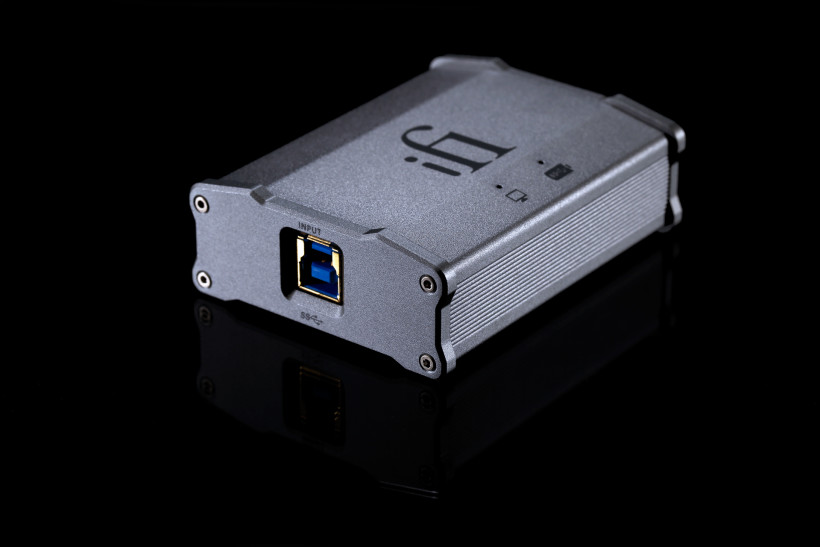 iGalvanic3.0 is a part of the nano family and as such it’s very small. One can easily grasp it in one hand. At the same time it’s also very light, hence a scenario to have it not placed on a shelf but dangling between two USB cables instead is perfectly valid. The enclosure is made of aircraft-grade aluminium, that’s the iFi audio standard. Not only it looks cool, but also provides EMI/RFI shielding. Here it also should be known that our English company slightly reworked colouring of its products. For several years silver was the dominant one, yet now it’s either black or titanium alike scheme and these two – in my humble opinion – look much better. The former is reserved for Black Label products, hence pimped out versions of what’s already available, whereas the latter covers everything else. The TOTL Pro range gets titanium coating as well.
iGalvanic3.0 is a part of the nano family and as such it’s very small. One can easily grasp it in one hand. At the same time it’s also very light, hence a scenario to have it not placed on a shelf but dangling between two USB cables instead is perfectly valid. The enclosure is made of aircraft-grade aluminium, that’s the iFi audio standard. Not only it looks cool, but also provides EMI/RFI shielding. Here it also should be known that our English company slightly reworked colouring of its products. For several years silver was the dominant one, yet now it’s either black or titanium alike scheme and these two – in my humble opinion – look much better. The former is reserved for Black Label products, hence pimped out versions of what’s already available, whereas the latter covers everything else. The TOTL Pro range gets titanium coating as well.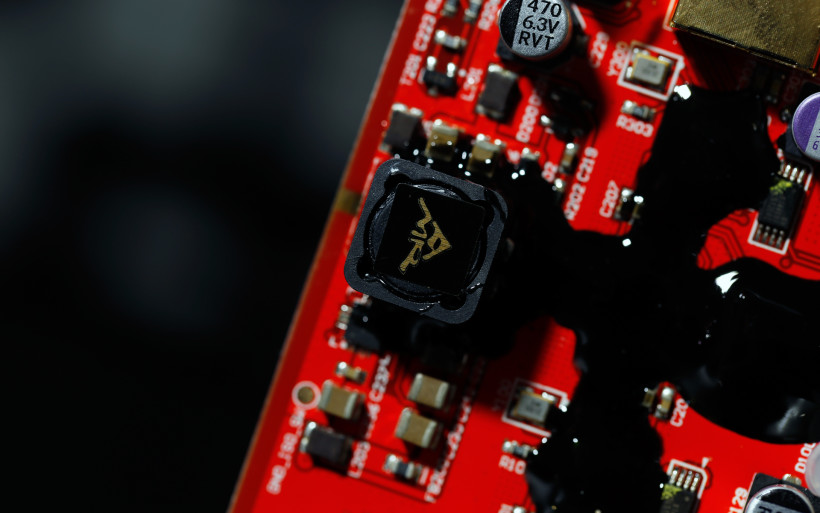 Moving on, the iGalvanic3.0 enclosure looks very familiar, this is the nano range product after all. Two LEDs on top inform one that a computer and USB2.0/3.0 connections are established, whereas there’s a bunch of marketing bullet points on the bottom, we’ll get to these in a bit. iGalvanic3.0 sports one USB3.0 input of Type B on its rear, whereas flat Type A USB output is located on its front. It’s quite self-explanatory which one handles upstream/downstream devices. What’s important though is one knob on the front, that’s iFi audio’s proprietary Ground Link feature. In short, it gets iGalvanic3.0 going regardless of a given setup’s grounding sorted or not. One can have single earth connections, multiple or none, whereas the first scenario is the best one. Three available knob settings are: DC-RF, ISO and RF. The first one avoids hum in earthless systems, the last one handles audio drop-outs in setups without RF earth and the middle knob position provides full isolation and as such is the optimal one.
Moving on, the iGalvanic3.0 enclosure looks very familiar, this is the nano range product after all. Two LEDs on top inform one that a computer and USB2.0/3.0 connections are established, whereas there’s a bunch of marketing bullet points on the bottom, we’ll get to these in a bit. iGalvanic3.0 sports one USB3.0 input of Type B on its rear, whereas flat Type A USB output is located on its front. It’s quite self-explanatory which one handles upstream/downstream devices. What’s important though is one knob on the front, that’s iFi audio’s proprietary Ground Link feature. In short, it gets iGalvanic3.0 going regardless of a given setup’s grounding sorted or not. One can have single earth connections, multiple or none, whereas the first scenario is the best one. Three available knob settings are: DC-RF, ISO and RF. The first one avoids hum in earthless systems, the last one handles audio drop-outs in setups without RF earth and the middle knob position provides full isolation and as such is the optimal one.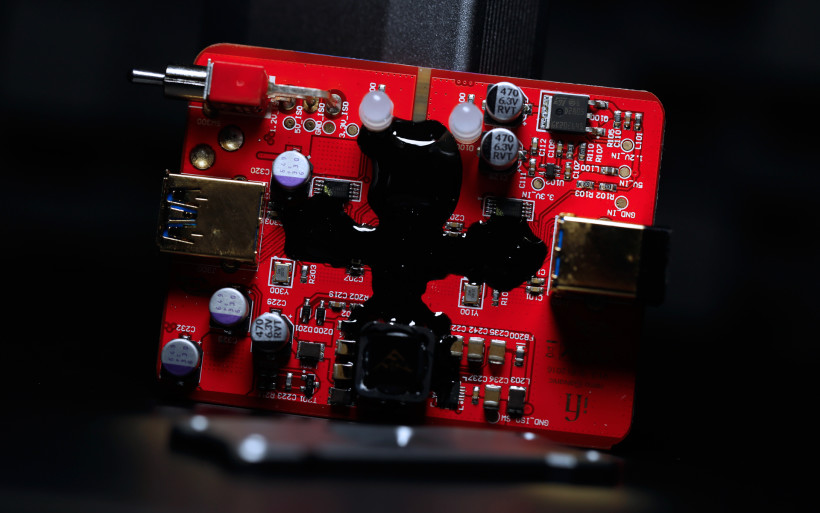 iGalvanic3.0 was in development for two years and – as iFi audio rep puts it – this was the most ambitious and difficult product to deliver thus far. After dealing with four screws and seeing how its innards look like, one might think at first that this statement is a bit stretched. iFi audio aimed at fully operational USB3.0 protocol, simply because in its case both transmitting and receiving lines are separated. Of course it’s backwards compatible with USB2.0. But not only that, the decision was made to ditch the commonly used SerDes (Serializer/Deserializer) platform and develop something from scratch. What exactly? That’s the secret sauce no iFi rep wants to spill. What’s known is that it’s based neither on optocouplers nor transformers. When this was done, it turned out that a German sub-contractor responsible for HFP transformers couldn’t make ’em within tight specs, hence iFi audio tech team bought necessary winding machines, ovens and the lot, learned how to make these small critters and rolled with their own.
iGalvanic3.0 was in development for two years and – as iFi audio rep puts it – this was the most ambitious and difficult product to deliver thus far. After dealing with four screws and seeing how its innards look like, one might think at first that this statement is a bit stretched. iFi audio aimed at fully operational USB3.0 protocol, simply because in its case both transmitting and receiving lines are separated. Of course it’s backwards compatible with USB2.0. But not only that, the decision was made to ditch the commonly used SerDes (Serializer/Deserializer) platform and develop something from scratch. What exactly? That’s the secret sauce no iFi rep wants to spill. What’s known is that it’s based neither on optocouplers nor transformers. When this was done, it turned out that a German sub-contractor responsible for HFP transformers couldn’t make ’em within tight specs, hence iFi audio tech team bought necessary winding machines, ovens and the lot, learned how to make these small critters and rolled with their own.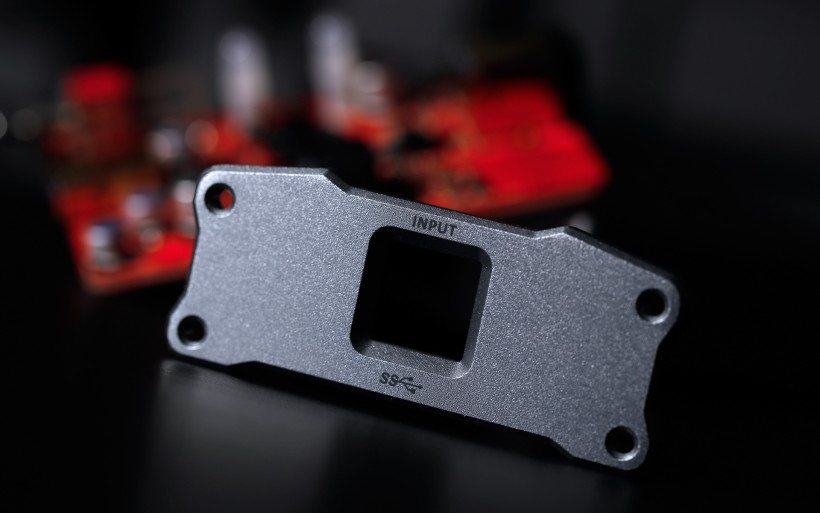 And lastly, iGalvanic3.0 is loaded with a number of the proprietary usual iFi audio suspects. REclock2/REgenerate2/REbalance2 means that this device has its own precise master clock, yet data is reworked two times; before and after galvanic isolation. iGalvanic3.0 doesn’t need a separate power supply and is perfectly fine with what USB bus provides. Yet if one would like to push things even further, iDefender3.0 and iPower tweaks by the same manufacturer will feed iGalvanic3.0 from either a wall socket or a power strip directly. It should be also known that the best USB treatment in the current iFi audio portfolio happens when this isolator fronts micro iUSB3.0 in the same chain. It doesn’t go unnoticed that some features these two share, hence they overlap. Yet iGalvanic3.0 is the nano product and as such it’s not as effective as micro iUSB3.0 as far as REclock2/REgenerate2/REbalance2 functions go.
And lastly, iGalvanic3.0 is loaded with a number of the proprietary usual iFi audio suspects. REclock2/REgenerate2/REbalance2 means that this device has its own precise master clock, yet data is reworked two times; before and after galvanic isolation. iGalvanic3.0 doesn’t need a separate power supply and is perfectly fine with what USB bus provides. Yet if one would like to push things even further, iDefender3.0 and iPower tweaks by the same manufacturer will feed iGalvanic3.0 from either a wall socket or a power strip directly. It should be also known that the best USB treatment in the current iFi audio portfolio happens when this isolator fronts micro iUSB3.0 in the same chain. It doesn’t go unnoticed that some features these two share, hence they overlap. Yet iGalvanic3.0 is the nano product and as such it’s not as effective as micro iUSB3.0 as far as REclock2/REgenerate2/REbalance2 functions go.
Usability and sound
In order to review iFi audio iGalvanic3.0, my Boenicke W8 reference speakers and PureAudioProject’s Trio10 Voxativ open-baffles were used. Trilogy 925 integrated and JOB 225 loaner were on duty as well. As per usual, LampizatOr Golden Gate (Psvane WE-101D + KR Audio 5U4G Ltd. Ed.) handled the d/a conversion task, whereas Asus UX305LA was responsible for files storage and OS control. Here’s the story.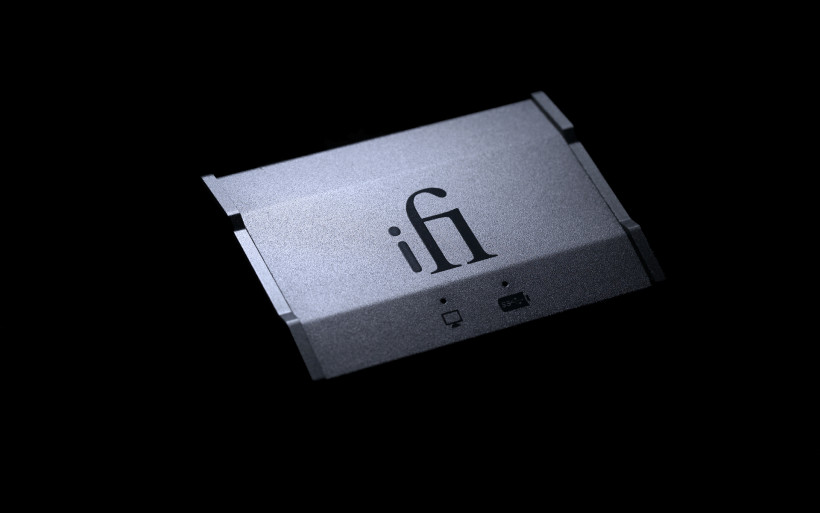 The iGalvanic3.0 plan was very simple. On the contrary to what I usually do, my goal was to use this device in one setup only – my reference rig. Why? Well, for two reasons. Firstly, my main platform is – dare I say – very expensive. And secondly, small buggers by iFi audio proved me several times already that their input is audible and beneficial in such theoretically hostile environment, even though one might initially think that there’s no place for affordable stuff in there. From my perspective there’s logic in this madness. At the moment, even the slightest upgrade within my own four walls becomes very costly. There’s not much room to maneuver without swapping one of the main pieces of my daily puzzle and if so, that’s upper four figures talk and no less. And even if tweaks – i.e. cables – are on the table, hundreds of Euros have to be spent and without any guarantee of an outcome getting any better, still. Usually the regular meta shifts slightly and that’s it. As a product designed to do the job in the quite obscure realm, here iGalvanic3.0 comes into play. It actually might improve a thing or two for this scribe as his rig’s USB protocol isn’t isolated in such fashion yet. Not only that, in the context of the total system’s value, such magic can happen for pennies and this writing is about unfolding these cards. And on that note, let’s move to the tasty bits. Well… almost.
The iGalvanic3.0 plan was very simple. On the contrary to what I usually do, my goal was to use this device in one setup only – my reference rig. Why? Well, for two reasons. Firstly, my main platform is – dare I say – very expensive. And secondly, small buggers by iFi audio proved me several times already that their input is audible and beneficial in such theoretically hostile environment, even though one might initially think that there’s no place for affordable stuff in there. From my perspective there’s logic in this madness. At the moment, even the slightest upgrade within my own four walls becomes very costly. There’s not much room to maneuver without swapping one of the main pieces of my daily puzzle and if so, that’s upper four figures talk and no less. And even if tweaks – i.e. cables – are on the table, hundreds of Euros have to be spent and without any guarantee of an outcome getting any better, still. Usually the regular meta shifts slightly and that’s it. As a product designed to do the job in the quite obscure realm, here iGalvanic3.0 comes into play. It actually might improve a thing or two for this scribe as his rig’s USB protocol isn’t isolated in such fashion yet. Not only that, in the context of the total system’s value, such magic can happen for pennies and this writing is about unfolding these cards. And on that note, let’s move to the tasty bits. Well… almost.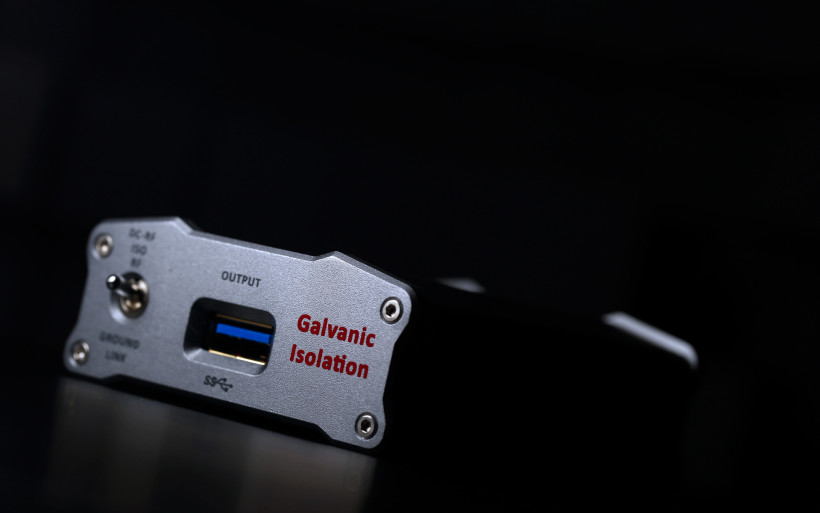 iFi audio iGalvanic3.0 is tricky to use. This product is of plug&play sort, yet in some cases it will turn out to be anything but. When it arrived, there were some issues alright. At first my DAC was not seen on my OS with our English critter in the chain. After some tinkering I was able to handle this, yet playback froze after seconds, which in general led to rather odd initial experience. But once all this was sorted, some additional knowledge catching-up was performed and all ’em dots became properly connected, it turned out that iGalvanic3.0 is actually a very smart diagnostic tool to use. Why? It’s an efficient indicator of any grounding related issues in a given setup and this was the case in mine, my laptop was the culprit. As soon as I realized that any potential trouble along the road were not really iGalvanic3.0 related, I was able to track and solve ’em. In my case patience turned out to be the key. Grounding aside, slowly connecting one item at a time instead of rushing things, then waiting for a proper handshake and moving from there turned out to be the key. And once the product started working as intended, namely without any signal drops/hum etc., things were dandy ever since. After all, patience is a virtue for a reason, right?
iFi audio iGalvanic3.0 is tricky to use. This product is of plug&play sort, yet in some cases it will turn out to be anything but. When it arrived, there were some issues alright. At first my DAC was not seen on my OS with our English critter in the chain. After some tinkering I was able to handle this, yet playback froze after seconds, which in general led to rather odd initial experience. But once all this was sorted, some additional knowledge catching-up was performed and all ’em dots became properly connected, it turned out that iGalvanic3.0 is actually a very smart diagnostic tool to use. Why? It’s an efficient indicator of any grounding related issues in a given setup and this was the case in mine, my laptop was the culprit. As soon as I realized that any potential trouble along the road were not really iGalvanic3.0 related, I was able to track and solve ’em. In my case patience turned out to be the key. Grounding aside, slowly connecting one item at a time instead of rushing things, then waiting for a proper handshake and moving from there turned out to be the key. And once the product started working as intended, namely without any signal drops/hum etc., things were dandy ever since. After all, patience is a virtue for a reason, right? OK, now is the time to tell the sound quality related story. iGalvanic3.0’s input was heard loud and clear in my setup right from the get-go. It wasn’t a matter of ‘a bit here, a bit there’ changes but differences of magnitude big enough to be described very shortly. It took this scribe maybe an hour or so to fully grasp what iGalvanic3.0 does and the rest of the evaluation process served as a reassurance measure that his ears still work as intended. In short, the English critter doesn’t turn things upside down but provides quite extensive cleaning&polishing service instead. Grain is often a part of the music we don’t even notice. Its presence we start to acknowledge once it’s gone. And having said this, iGalvanic3.0 did this exactly, it removed this proverbial sand and took the edge off. This alteration made the outcome not more polite or mellow but smoother, hence better and the same story was with clarity as that was yet another aspect elevated past grain removal. When a given instrument is more precisely sketched but not stripped from its muscle tissue, there’s no valid reason to complain. In short, the sound became poshier.
OK, now is the time to tell the sound quality related story. iGalvanic3.0’s input was heard loud and clear in my setup right from the get-go. It wasn’t a matter of ‘a bit here, a bit there’ changes but differences of magnitude big enough to be described very shortly. It took this scribe maybe an hour or so to fully grasp what iGalvanic3.0 does and the rest of the evaluation process served as a reassurance measure that his ears still work as intended. In short, the English critter doesn’t turn things upside down but provides quite extensive cleaning&polishing service instead. Grain is often a part of the music we don’t even notice. Its presence we start to acknowledge once it’s gone. And having said this, iGalvanic3.0 did this exactly, it removed this proverbial sand and took the edge off. This alteration made the outcome not more polite or mellow but smoother, hence better and the same story was with clarity as that was yet another aspect elevated past grain removal. When a given instrument is more precisely sketched but not stripped from its muscle tissue, there’s no valid reason to complain. In short, the sound became poshier. Alterations described above aren’t anything new, many USB depoopifiers impact the sound in similar way. But the best part is that our English puppy pushes things even further in this direction precisely. One doesn’t have to skip any other USB item in a given chain, with exception of other galvanic isolators of course. But this aside, grain removal wasn’t the only thing changed. The soundstage itself became bigger as well. In case of my reference speakers, this aspect even grander than already is might seem excessive on paper, yet in reality it’s not. iGalvanic3.0 doesn’t make the picture diluted in the process, on the contrary. Everything remains intact as far as instruments’ size goes, but their contours are a bit sharper, hence more visible and – along with slightly more air in-between – this amplifies their presence onstage. To translate all this into more understandable lingo, that’s good stuff with no downsides.
Alterations described above aren’t anything new, many USB depoopifiers impact the sound in similar way. But the best part is that our English puppy pushes things even further in this direction precisely. One doesn’t have to skip any other USB item in a given chain, with exception of other galvanic isolators of course. But this aside, grain removal wasn’t the only thing changed. The soundstage itself became bigger as well. In case of my reference speakers, this aspect even grander than already is might seem excessive on paper, yet in reality it’s not. iGalvanic3.0 doesn’t make the picture diluted in the process, on the contrary. Everything remains intact as far as instruments’ size goes, but their contours are a bit sharper, hence more visible and – along with slightly more air in-between – this amplifies their presence onstage. To translate all this into more understandable lingo, that’s good stuff with no downsides.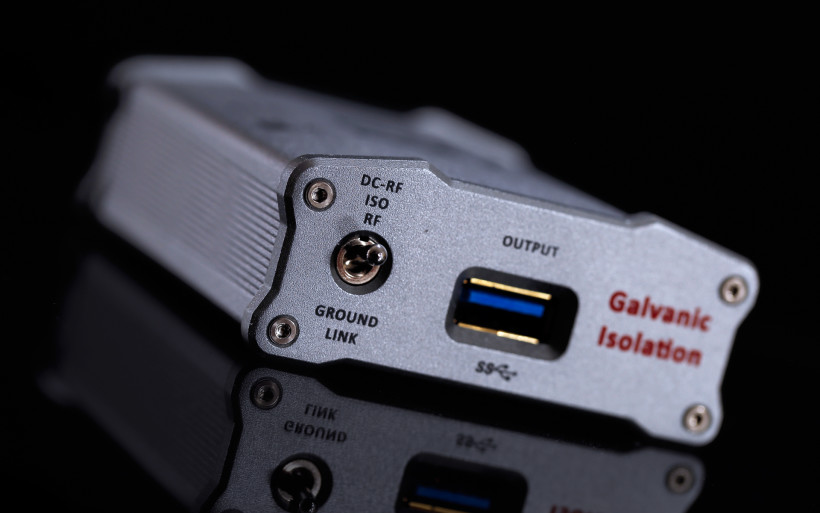 In my setup, iFi audio iGalvanic3.0 turned out to be a potent speed injector as well. Bass response with this device at works was tighter, more agile, less boomy and – when all this was combined – naturally perceived as faster. That wasn’t a night and day difference but something surely noticeable. Such an outcome was clear and synergistic with Trilogy 925 charmer and less so when JOB 225 was on. The takeaway here is that iFi audio’s galvanic isolator can alter tonal balance and shift the meta slightly in a precise direction. This effect is audible enough to make it beneficial for fluffy, warm and cuddly sounding systems and not as present to do any damage in feisty, fast and lean rigs. To conclude, iGalvanic3.0 turned out to be a great, noticeable performer, which elevated the overall experience with no strings attached.
In my setup, iFi audio iGalvanic3.0 turned out to be a potent speed injector as well. Bass response with this device at works was tighter, more agile, less boomy and – when all this was combined – naturally perceived as faster. That wasn’t a night and day difference but something surely noticeable. Such an outcome was clear and synergistic with Trilogy 925 charmer and less so when JOB 225 was on. The takeaway here is that iFi audio’s galvanic isolator can alter tonal balance and shift the meta slightly in a precise direction. This effect is audible enough to make it beneficial for fluffy, warm and cuddly sounding systems and not as present to do any damage in feisty, fast and lean rigs. To conclude, iGalvanic3.0 turned out to be a great, noticeable performer, which elevated the overall experience with no strings attached.
Summary
As far as USB audio goes, it gets somewhat predictable with iFi audio. Point being, each of this company’s affordable decrapifiers known to me simply does the job and now iGalvanic3.0 joins this group. It’s made up to high standards, works as intended and doesn’t break the bank. Yes, said machine is a niche product and as such it might require certain know-how to set up. Yet there’s no shortage of people perfectly aware of what it is and what it does, who’re all about squeezing every bit of performance out of their DACs. Here iFi audio iGalvanic3.0 is yet another potent measure to up the USB ante even more. Yes, it requires two cables and yes, that’s yet another box in the chain. Still, that’s a small trade-off after taking its input into consideration.
Yours truly honestly can’t say how iFi audio iGalvanic3.0 would fare against competitors playing the same isolation game. No other product of this sort is known to him, but these two things he’s now perfectly aware of; this small deck turned out to be both beneficial and audible in his reference setup and as such it became the most affordable element in it by far. Oh yes, it stays in there for good, simply because it improves sound quality for pennies from my perspective. The catch? After taking a good long look at iGalvanic3.0’s asking price, I couldn’t find any major and that’s why it has my sincere recommendation. Every aficionado rollin’ with pricey USB audio should at least give this review’s hero a try, that’s the smart play. ‘Till next time!
Associated equipment:
- Amplifiers: Trilogy 925, JOB 225
- Preamplifier: Sanders Sound Systems preamplifier
- Sources: Lampizator Golden Gate (Psvane WE101D-L + KR Audio 5U4G Ltd. Ed.)
- Speakers: Boenicke Audio W8, PureAudioProject Trio10 Voxativ
- Transports: Asus UX305LA
- Speaker cables: Forza AudioWorks Noir Concept, Audiomica Laboratory Celes Excellence
- USB cables: Forza AudioWorks Twin, iFi audio Gemini and Mercury
- Interconnects: Forza AudioWorks Noir, Audiomica Laboratory Erys Excellence
- Power supply: Gigawatt PF-2 + Gigawatt LC-2 MK2 + Forza AudioWorks Noir Concept/Audiomica Laboratory Ness Excellence
- Rack: Franc Audio Accessories Wood Block Rack
- Music: NativeDSD
Retail prices of reviewed components in EU (incl. tax):
- iFi audio iGalvanic3.0: €399
Manufacturer: iFi audio



